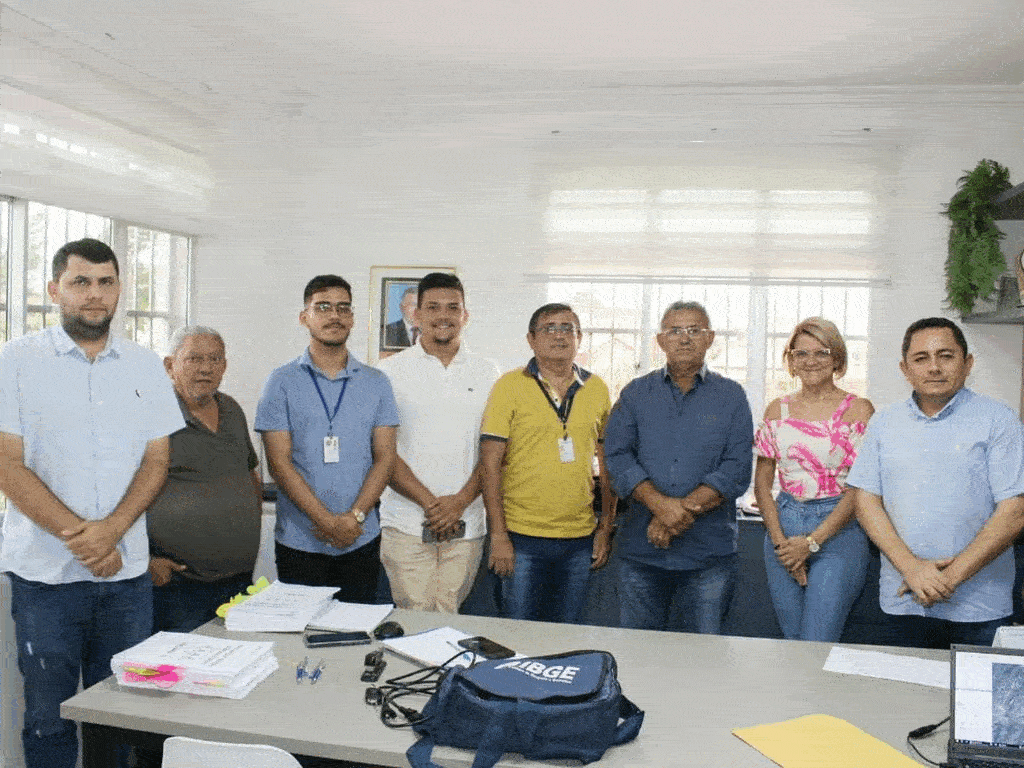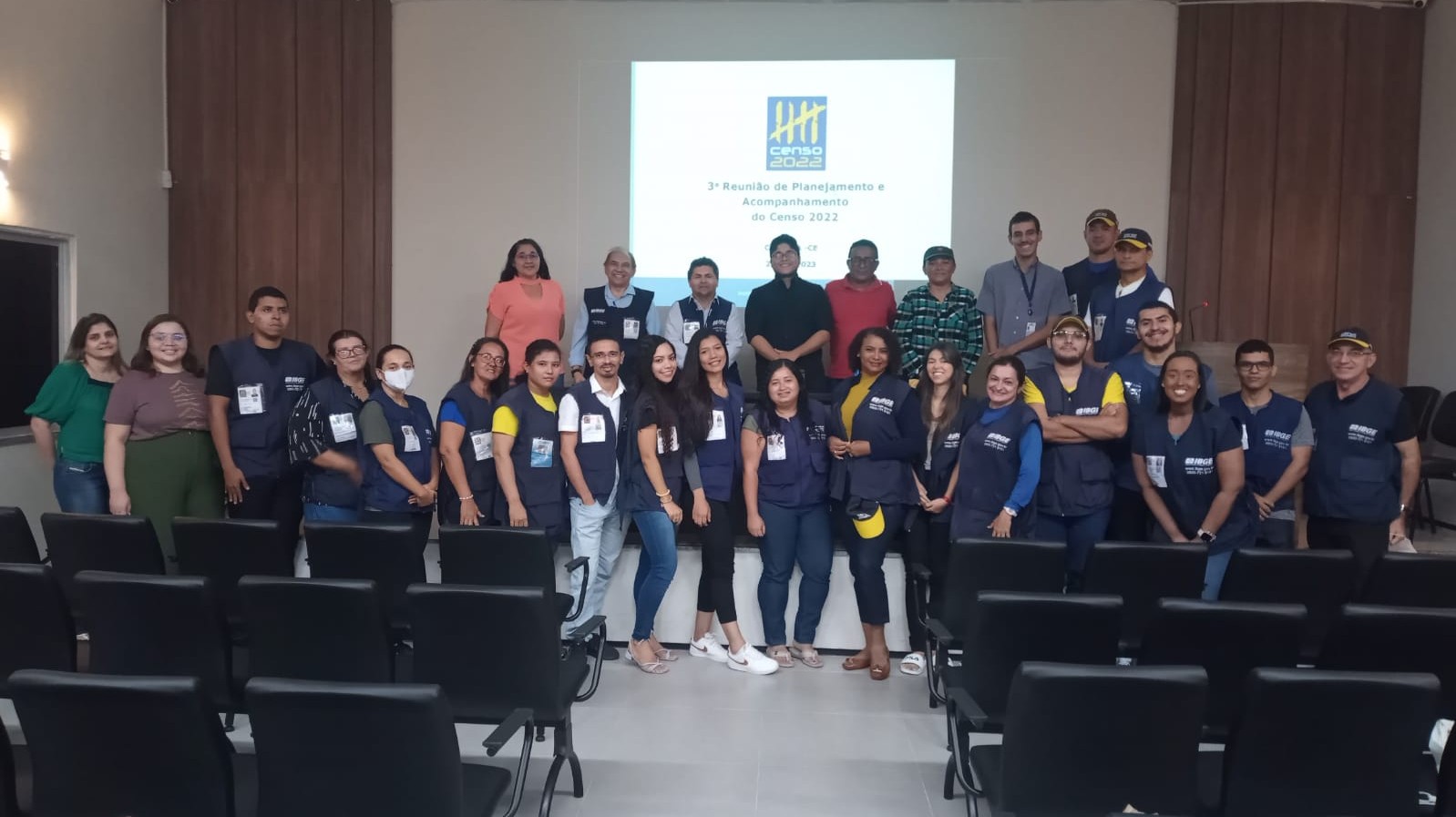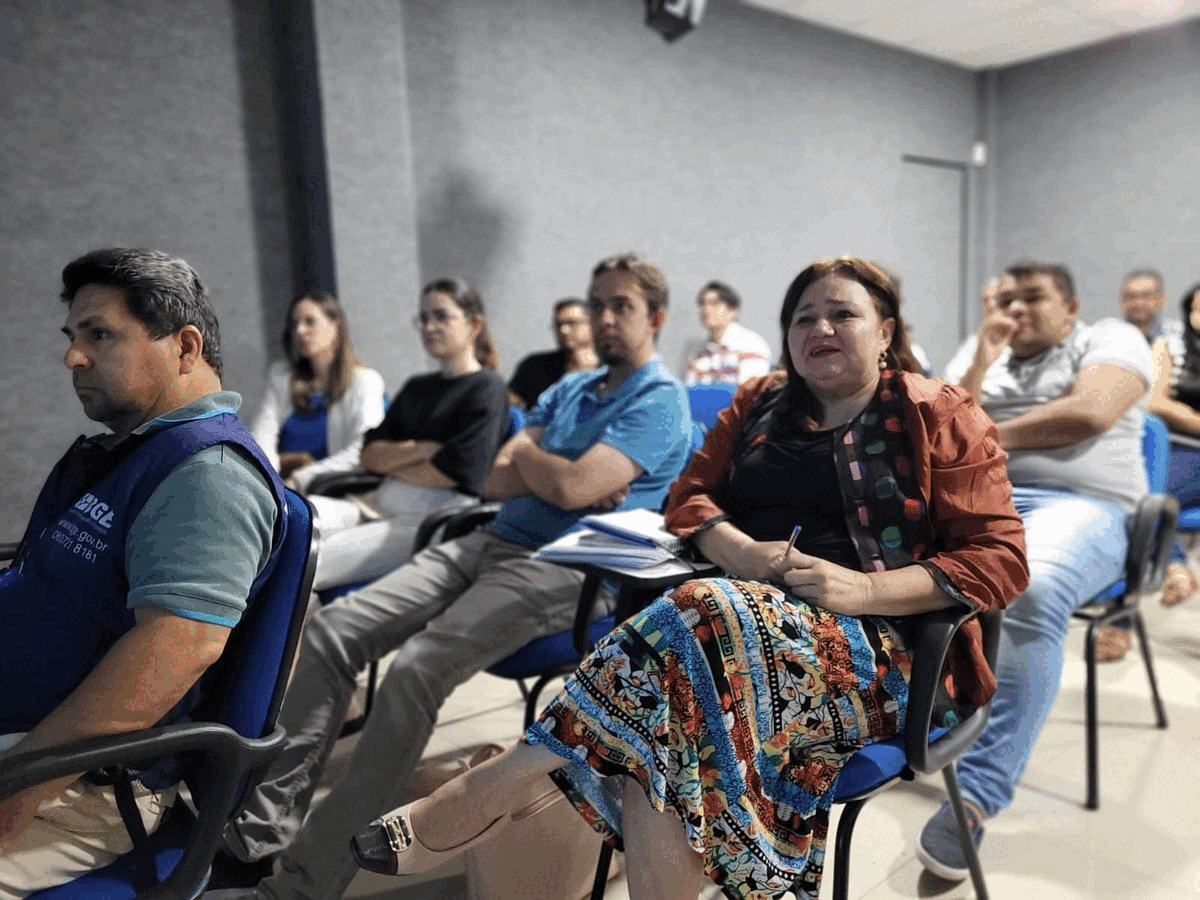Municipalities in Ceará carry out third round of Repacs
May 03, 2023 18h41 | Last Updated: May 09, 2023 10h28
With the Census in the final stretch, many municipalities in Ceará have already closed the household data collection. Therefore, the IBGE State Superintendence in Ceará (SES-CE) is now carrying out the third phase of the 2022 Census Planning and Monitoring Meetings (Repacs). Up to Tuesday (2), meetings closing the Census were held in 149 out of 184 municipalities in the state, which represents more than 80% of the total.

Pictures from the third phase of Repacs in Ceará
Repacs are part of a series of a minimum of three meetings per municipality. The first meetings were held before the beginning of the Census to plan the operation and gather the required support. The second round occurred during the data collection to follow up and improve the work. The final stretch of the Census marks the third round of Repacs to assess the process and show some preliminary data. Besides these three mandatory meetings, extraordinary Repacs may take place as well, according to the needs of each municipality.
Every Census planning and monitoring meeting is organized and conducted by Census area and sub-area coordinators in each region of the state, under the supervision of the State Coordinator of Repacs, Thais Moura. Repacs gather representatives from each municipality, being mayors, heads of office, city counselors, secretaries, servants, etc., as well as members of public and private institutions and of organizations of the civil society.
Third Repac in Caucaia
The third Repac in the municipality was held in the morning of April 25 at the Auditorium of the City Council of Caucaia-CE, counting with the presence of Municipal Census Agents (ACMs), Supervisor Census Agents (ACSs) and enumerators working in the region. External participants were members of the City Hall, Municipal Health and Education Secretariats and City Council, as well as representatives from the Caucaia Environmental Institute (Imac) and from the National Coordination of Articulation of Quilombos (Conaq) in Ceará.

Third Repac in Caucaia-CE
The meeting began with the speech of the Area Coordinator Luciano Oliveira, who immediately highlighted that the coverage in the municipality was closed with the regular Census data collection in February. “All the areas in Caucaia have already been visited. Now we are working to improve the quality of the indicators. Households without an interview are being re-visited. Our goal is that the non-response rate in Caucaia stays below 5%, which is very close,” highlighted the Coordinator, who reinforced the need for support to close the compilation step in the municipality.
Then, the IBGE Superintendent in Ceará, Francisco Lopes, explained the socio-demographic change that Brazil has been facing: “On the one hand, the Brazilian population has been showing a decrease in the fertility and birth rates and, on the other hand, an increase in the mortality rate and in the average life expectancy. The statistical methods point out that the population remains unchanged, but it doesn´t grow anymore. Scholars and the population as a whole should understand these factors.”
The Superintendent showed the preliminary data for the municipality of Caucaia, locally illustrating this trend faced by the entire country: “The indicators show that Caucaia remains the second most populated municipality in Ceará, but the population is not growing as expected. Most Brazilian municipalities did not hit the population estimate.” Lopes highlighted the importance of the compilation step to guarantee data quality: “Everything that will happen in the coming years is decided according to the population. To fulfill its mission, the IBGE still maintains the Census operation in order to show the real population of the municipalities.”
The last presentation was from Fábio Jota, an analyst of Traditional Peoples and Communities, who briefly introduced the methodological innovations of the 2022 Census in relation to these populations. He commented on the numbers of the traditional communities in the municipality as well. “We will have the quilombola population data in Caucaia for the first time ever. And the indigenous population in the municipality is quite bigger than that in the 2010 Census,” celebrated him.

More pictures of the third Repac in Caucaia-CE
Extraordinary Repac in Fortaleza
The extraordinary Repac in Fortaleza-CE was held in the afternoon of April 28. Gathered in the Francisco Cronje Auditorium, in the headquarters of SES-CE, IBGE servants and guests discussed the progress of the Census in the capital. Representatives of different institutions were present, among them: Superintendence for Public Security Research and Strategy (Supesp), State Secretariat of Health of Ceará (Sesa), State Secretariat of Education of Ceará (Seduc), Brazilian Agricultural Research Corporation (Embrapa), Bank of the Northeast of Brazil (BNB), Company for Technical Assistance and Rural Extension of Ceará (Ematerce), Development Agency of the State of Ceará (Adece) and Research and Economic Strategy Institute of Ceará (Ipece), as well as members of the Secretariat of Environment of Maracanaú-CE and of the Secretariat of Administration and Finances of Mulungu-CE.

Extraordinary Repac in Fortaleza
Francisco Lopes, the IBGE Superintendent in Ceará, opened the meeting by introducing the coordinators who are working in the Census, as well as the heads of Supervision of SES-CE present in the Repac. “We are doing a new attempt with residents who were either absent or who refused to answer. In the case of Fortaleza, these households reached 100 thousand. We have reduced a lot with the compilation work and we hope to improve even more,” celebrated the Superintendent. At that opportunity, he emphasized the partnership established with the Planning Institute of Fortaleza (Iplanfor), which is supporting SES-CE with health and endemic agents of the municipality to streamline the access to communities with higher non-response rates.

Superintendent Francisco Lopes and coordinators Theo Levi and Thais Moura present the Fortaleza-CE data
Then the preliminary data of the municipality were shown by the Area Coordinator of Fortaleza I, Théo Levi Sales, and by the State Coordinator of Repacs, Thais Moura. “Even with all the effort to complete the data collection, we are still with a significant number of units that have already been visited, which we confirmed as occupied, but we could not manage the interviews,” pointed out Sales when presenting the status of the data collection in the capital. “Repacs are the opportunity the society has to question the Census data that are being shown in order to guarantee the quality of this information,” complemented Moura, approaching the importance of Census monitoring meetings.
“I would like to stress how much key the Census is. The more real the picture of the population, the more we can materialize it in our work. Therefore, interventions can correspond to real data,” added João Washington de Meneses, of the State Secretariat of Health of Ceará (Sesa), publicly recognizing the importance of the work developed by the IBGE to the institutions present in the extraordinary Repac. A new meeting will be held after the end of the census collection in Fortaleza-CE, since the data refining work continues along May.

More pictures of the extraordinary Repac in Fortaleza-CE
